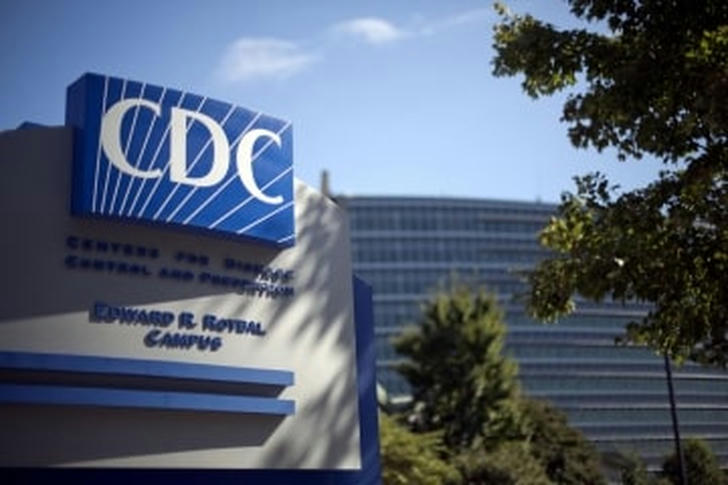NBCCEDP: Providing strong support for women's health
——Breast cancer and cervical cancer screening cannot be ignored
In the field of women's health, early detection of breast cancer and cervical cancer is crucial. Annual screening is not only a way of health management, but also a key link in ensuring the quality of life. For women with limited economic conditions and insufficient medical insurance, the Centers for Disease Control and Prevention (CDC) in the United States has launched a nationwide National Breast and Cervical Cancer Early Detection Program (NBCCEDP) in conjunction with a number of health organizations.

📌 What is NBCCEDP?
NBCCEDP (National Breast and Cervical Cancer Early Detection Program) was established by the CDC to help millions of women in the United States to receive timely breast and cervical disease screening and follow-up diagnosis through organized public health intervention. Since its operation in 1991, the program has provided screening, diagnosis and referral services to millions of women, helping to detect and intervene in a large number of early cancers and precancerous lesions.
🔍 Why is it important to screen for breast and cervical cancer?
Although these two diseases are common, they are highly controllable, provided that they are screened in time:
🔬 Breast cancer:
After early detection, the treatment success rate can exceed 90%.
Most early cases have no obvious symptoms and rely on imaging examinations for timely identification.
🔬 Cervical cancer:
Usually caused by high-risk HPV virus, the progression process is slow.
Regular Pap smears and HPV tests can intervene before the lesions develop into cancer.
🛠️ The services provided by NBCCEDP include:
| 🛠️ Service Item | Description |
|---|---|
| 🧪 Screening Services | Includes breast imaging (e.g., mammography), Pap tests, and HPV testing. |
| 🔍 Further Evaluation | Follow-up tests for abnormal results, such as breast ultrasound or biopsy. |
| 🧭 Referral Resources | Assistance in connecting to appropriate facilities for diagnosis or treatment. |
| 📚 Health Education | Provides educational materials to enhance women’s awareness of disease prevention. |

👩⚕️ Who can participate in the program?
This testing program is designed for the following groups:
Women aged 40 to 64 (breast screening)
Women aged 21 to 64 (cervical screening)
People with significant health insurance gaps
People with low income, about 250% of the federal poverty line
Some women who are slightly older or younger may also meet the eligibility assessment of local programs.
📍 Program coverage
NBCCEDP covers all 50 states in the United States, as well as the following regions and organizations:
District of Columbia
Puerto Rico, Guam, American Samoa and other regions
13 Native American tribes and related communities
✅ Six major screening advantages
| ✅ Advantage | Explanation |
|---|---|
| 🕓 Early Detection | Increases chances of recovery and slows disease progression. |
| 🧬 Reduced Mortality | National studies show a direct link between screening and lower death rates. |
| 🚫 Lower Treatment Burden | Early intervention helps avoid intensive treatments like radiation or chemotherapy. |
| 💰 Lower Medical Costs | Early-stage care is significantly less expensive than late-stage treatment. |
| 🌿 Peace of Mind | Knowing one’s health status helps reduce anxiety and mental stress. |
| 👨👩👧 Family Support | Protecting women’s health also safeguards the well-being and structure of the family. |
🌍 Overview of other related screening projects
| 🌍 Program Name | Organization | Target Population | Provided Services |
|---|---|---|---|
| NBCCEDP | U.S. CDC | Medically underserved populations | Breast and cervical cancer screening, follow-up, and referral services |
| NBCF | National Breast Cancer Foundation | Underserved women | Includes 2D/3D mammography, clinical breast exams, and breast ultrasound |
| ACS | American Cancer Society | High-risk and hard-to-reach individuals | Screening information and community referral resources |

📞 How to act?
✅ Step 1: Find testing resources in your state
You can find local institutions that provide NBCCEDP services through the official website of the CDC.
✅ Step 2: Submit relevant information
Including basic information such as age, income and medical insurance status for eligibility review.
✅ Step 3: Schedule an examination time
Make an appointment for screening services through approved institutions and complete the testing process as soon as possible.
💬 Need to know more?
You can go to the NBCCEDP project page on the CDC website, or contact your local health agency for specific participation procedures and resource information.
